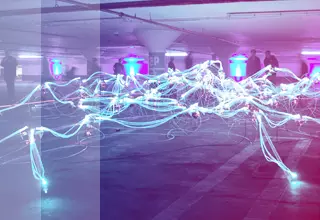Clean buildings are often referred to as green or sustainable buildings and are designed and operated to minimise their environmental impact.
The key aspects of such buildings include using sustainable materials, being energy efficient, conserving water, and waste management. These buildings often contain smart technologies to monitor and optimise energy use.
The Crystal in London is one of the world's most sustainable buildings featuring advanced technologies for energy efficiency, water conservation, and air purification. It is entirely powered by renewable energy with solar panels and ground source heating pumps providing power.
The Bright Building in Manchester Science Park features a highly efficient thermal envelope and extensive use of natural light and renewable energy sources. Its design promotes flexibility and future-proofing, ensuring it remains at the forefront of green building practices.
The Eden in Manchester was a landmark project which completed in January 2024 and is Britain’s most sustainable office building, exceeding the UK Green Building Council’s 2030-2035 operational energy targets. The façade of the Eden is covered with plants that are designed to remove air pollutants, control temperature, and increase biodiversity in the area. These examples show that green buildings can be functional commercial buildings whilst having a positive impact on the environment.
Although clean buildings are the future in sustainable buildings, there remain several barriers to this becoming the new standard of buildings. Perhaps the most prominent being the financial costs. There are also the technical challenges and the lack of information and awareness about the support and guidance that is available. However, whilst eco-friendly materials and technologies can be more expensive than other options, clean buildings can lead to long-term savings.
There is also the challenge of enhancing existing buildings to become clean buildings. Whilst new clean buildings can achieve certifications such as LEED (Leadership in Energy and Environmental Design) or BREEAM (Building Research Establishment Environmental Assessment Method), it is also possible to incorporate renewable energy sources to existing buildings which can help reduce costs such as solar panels, smart HVAC systems, LED lighting, and advanced insulation.
In order to encourage real change in the industry, there will need to be collaboration across the sector and a focus on investing in sustainable practices. Although there are many factors to overcome before clean buildings become the new norm, given the changes that we are seeing in the industry, this may be closer than we think.
If you would like to discuss this article further, please contact Ambika Sharma.













